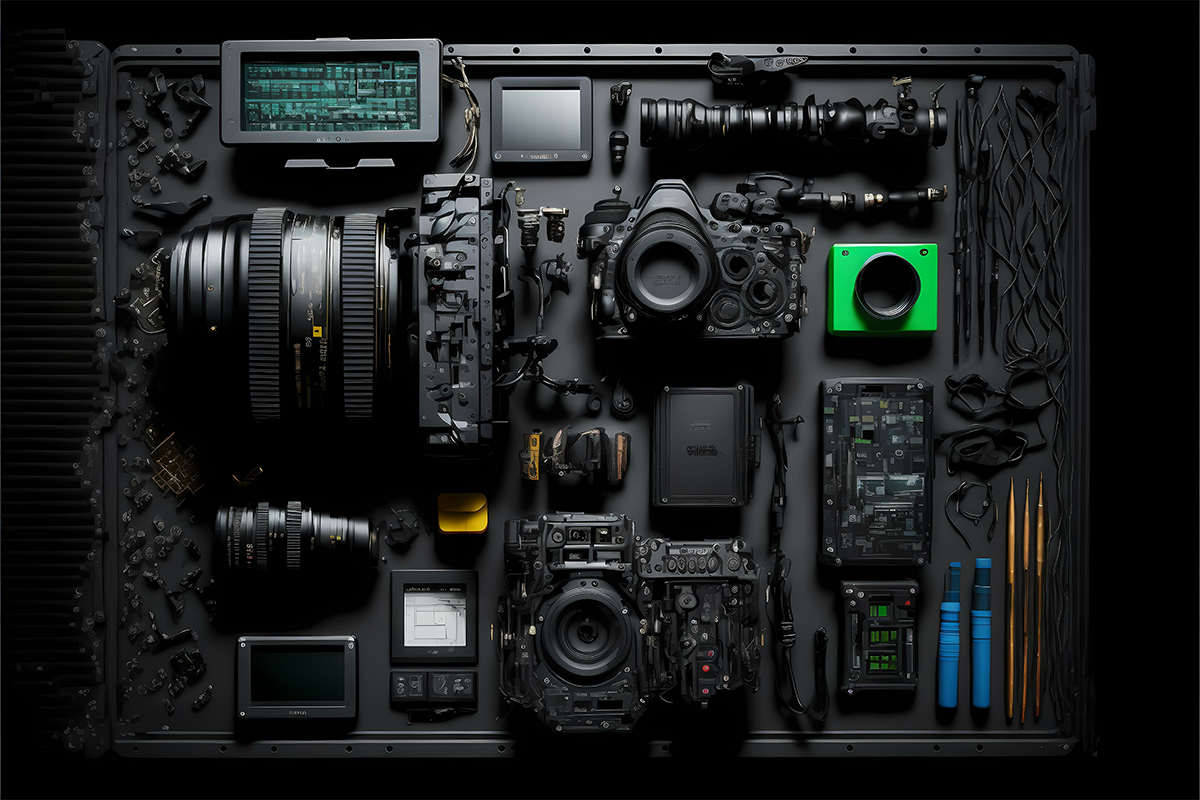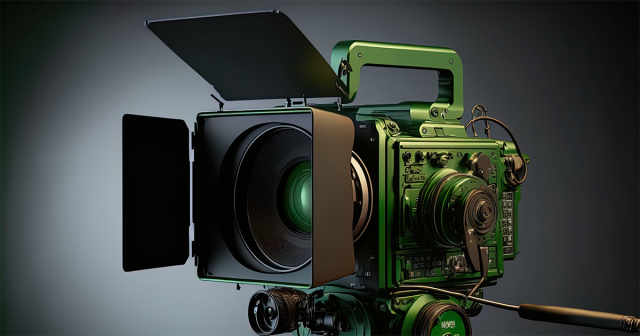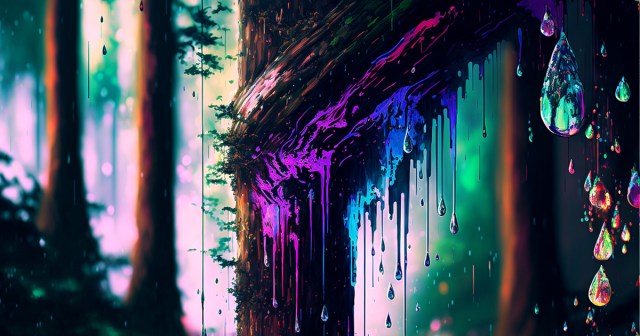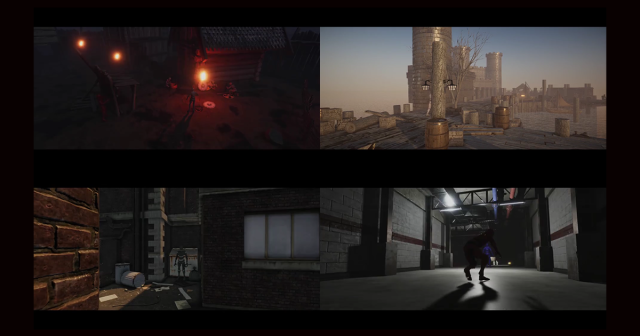
TL;DR
- In the past year algorithms have become a lot better at generating illustrations, art and photoreal scenes. Next up is video, but are we prepared?
- The wide availability of image generators has caused not only an explosion of experimentation but also discussion around the implications of the technology.
- Will we need to reframe the authorship of film and TV content as VFX supervisors, computer scientists, concept artists, engineers, and animators “become increasingly responsible for the movements and expressions of characters and the world they inhabit” on screen?
In the past year algorithms became a lot better at generating illustrations, art and photoreal scenes. The pace of development is unrelenting, meaning that this year we should expect AI-generated video tools. The implications of this are as exciting as they are challenging to the creative community.
A tour through the recent history of AI and its ability to churn out convincing and commercially viable illustrations, photographs, and paintings has been sketched by Wired.
Will Knight, the magazine’s senior writer, primes us to expect higher quality AI-made images and perhaps the emergence of AI video generators in 2023.
READ MORE: Where the AI Art Boom Came From—and Where It’s Going (Wired)
Researchers have already demonstrated prototypes, although their output is so far relatively simple. Stable Diffusion, Midjourney, Google, Meta and Nvidia are all working on the technology.
“AI elicits a special kind of anxiety for the film and TV industry’s creative classes,” Joshua Glick, Associate Professor of Film and Electronic Arts at Bard College, writes in another article for Wired.
“The question is whether feature-length films made by text-to-video generators will eliminate the skilled labor of screenwriters, graphic artists, editors, and directors.”
Glick is doubtful that Hollywood studios will launch a major lineup of AI-generated features any time soon. More importantly, he doesn’t think audiences are ready for AI-generated feature narratives either.
“Even as text-to-video software continues to improve at an extraordinary rate, it will never replace the social elements crucial to the product Hollywood makes and the culture that surrounds both gaudy blockbusters and gritty dramas alike,” Glick thinks.
He believes the human influence on the creation of film and TV shows is what makes storytelling on screen tick and something that AI can’t (yet) emulate.
READ IT ON AMPLIFY: AI Will Generate an Endless, Customized Stream of Media (and You’re the Muse)
READ IT ON AMPLIFY: Next-Gen (Generated) Creativity: The AI Imagery and Text Tool Combo
Of more pressing concern, he notes, is that studios will use algorithm-driven predictive analytics to greenlight only those projects they believe are sure to make money, leading to less diversity of form, story, and talent.
AI has already made its way into the creation of filmed stories. This is most notably the case in VFX. The Wētā FX software Massive, for example, has helped effects artists capture the seemingly “unfilmable,” especially on the macroscale.
Beginning with the creation of digital hordes of orcs and humans for the realistic combat in The Lord of the Rings: The Two Towers’ (2002) Battle of Helm’s Deep, Massive has since been responsible for expansive collections of lifelike entities, from the shiver of sharks in The Meg (2018) to the swarms of flying demons in Shang-Chi and the Legend of the Ten Rings (2021).
There are further examples of AI use ranging from the “synthetic resurrection” of iconic actors to performance capture assisted CGI characters. AI tools are so useful that “synthetic imagery is sure to become central to preproduction,” Glick believes. For instance, “screenwriters will be able to use AI-generated imagery for their pitch decks to evocatively establish the mood and feel of a project and position it within a larger genre.”
Likewise, concept artists will benefit from the back-and-forth tweaking of prompts and visual outputs as they flesh out a film’s narrative arc in the early stages of storyboarding. Generative AI might also expand the “previs” process of transforming flat images of material environments and character interaction into 3D approximations of scenes.
Extending this further, the use of AI in film and TV production might require a new set of skills able to guide AIs to desired results. Glick envisions a broader reframing of authorship as VFX supervisors, computer scientists, concept artists, engineers, and animators “become increasingly responsible for the movements and expressions of the characters on screen, as well as the look and feel of the world they inhabit.”
Far from ushering in the death of cinema, AI can help film the “unfilmable” and make cinema more collaborative:
“Never before has an amateur or seasoned professional been able to build such an elaborate project on such a small budget in such a short amount of time.”
READ IT ON AMPLIFY: Why is Generative AI Considered an Economic Gamechanger?
READ MORE: AI Isn’t Hollywood’s Villain—It’s a Flawed Hero (Wired)
This theme is taken up by Rex Woodbury, who writes about all the ways AI is set to disrupt industries in his article on Substack.
“Generative AI is the most compelling technology since the rise of mobile and cloud over a decade ago,” he declares. “We’re at an AI inflection point… underpinning a Cambrian explosion in innovation.”
He draws a direct line between tools like Adobe Premiere and Final Cut for editing, smartphones and GoPro cameras for action shots, drones for aerial shots, and YouTube and TikTok for publishing and monetizing video to AI as the next innovation that will democratize the creative industries.
“Just as AI amplifies creativity, AI amplifies productivity,” he says. “We see this in the tools that give writers and marketers superpowers, like Jasper.ai, Copy.ai, and Lex, [to help brainstorm ideas].”
He predicts that generative AI will soon collide with other maturing technologies, such as VR and AR and imagines text prompts that generate immersive, three-dimensional virtual worlds.
“Within the lifetime of someone born today, we’ll see every part of human life, work, and society reinvented by AI,” he theorizes.
READ IT ON AMPLIFY: The One-Human, One-Machine Movie Studio: How AI Could Change Hollywood
It’s also likely that AI will help evolve an “internet of me” — of which TikTok represents the starting rung… customized content created just for me and you.
“The world is shifting to personalization, and AI is the fuel on the fire. All of a sudden, a ‘1-on-1’ experience is replicable at scale — and today’s AI applications are still rudimentary compared to those we’ll see in the coming years. Think of every Craigslist category — education, books, home decor. Each one is ripe for reinvention.”
READ MORE: AI in 2023: The Application Layer Has Arrived (Digital Native)
None of these writers dismisses the very real ethical and legal issues surrounding AI’s pervasion of society. But it’s more a matter of figuring out how to live with AI, than banning it outright. That genie has long left the bottle.
“Leaps forward in technology often walk a fine line between deeply-impactful and dystopian,” Woodbury says. He lists the major ethical issues we need to work out, among them:
- Who is responsible for AI’s mistakes?
- Who is the creator of an AI work? Is it the AI? The developers? The person who wrote the prompt? The people whose work was used to train the model?
- How do we determine what’s human-made vs. machine-made? Where does the line that separates the two even exist?
- How do we get rid of AI bias?
- How do startups differentiate themselves and build a moat?
- Where will value accrue in the ecosystem, and how should value creation be distributed?
- Will AI be a net job creator or a net job destroyer? How do we retrain workers who are displaced by AI?
That’s a massive list. Perhaps we need an AI for that.
AI ART — I DON’T KNOW WHAT IT IS BUT I KNOW WHEN I LIKE IT:
Even with AI-powered text-to-image tools like DALL-E 2, Midjourney and Craiyon still in their relative infancy, artificial intelligence and machine learning is already transforming the definition of art — including cinema — in ways no one could have ever predicted. Gain insights into AI’s potential impact on Media & Entertainment in NAB Amplify’s ongoing series of articles examining the latest trends and developments in AI art
- What Will DALL-E Mean for the Future of Creativity?
- Recognizing Ourselves in AI-Generated Art
- Are AI Art Models for Creativity or Commerce?
- In an AI-Generated World, How Do We Determine the Value of Art?
- Watch This: “The Crow” Beautifully Employs Text-to-Video Generation




